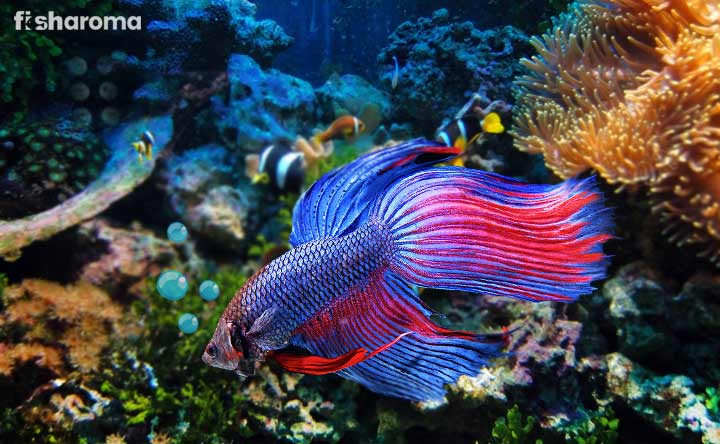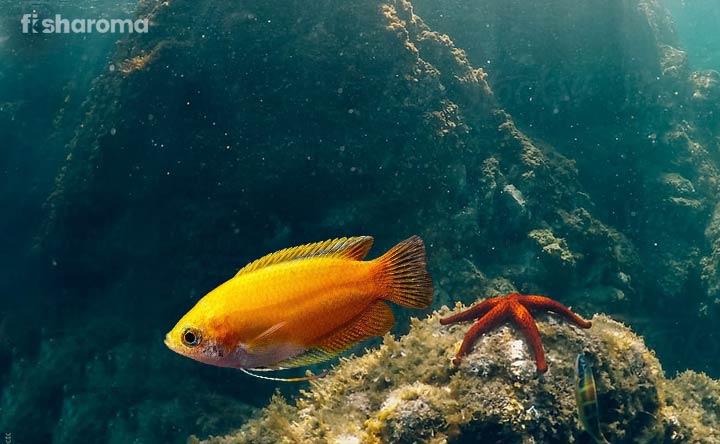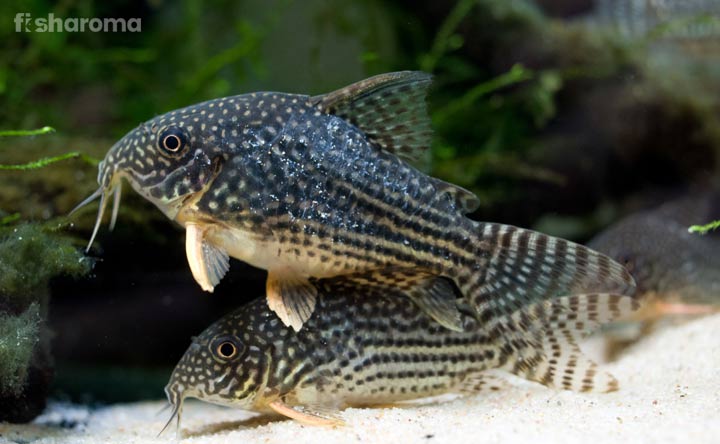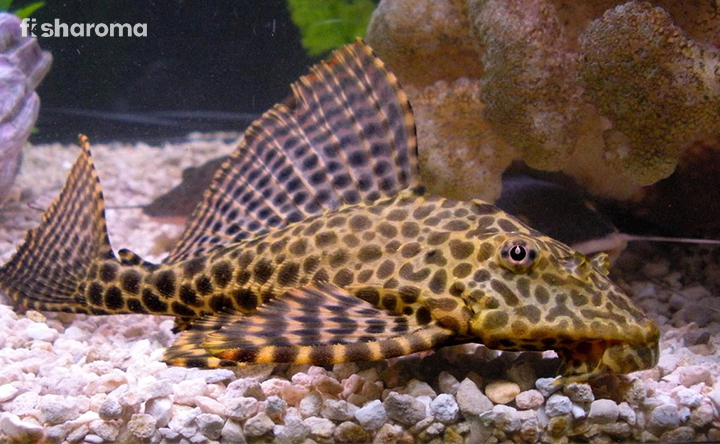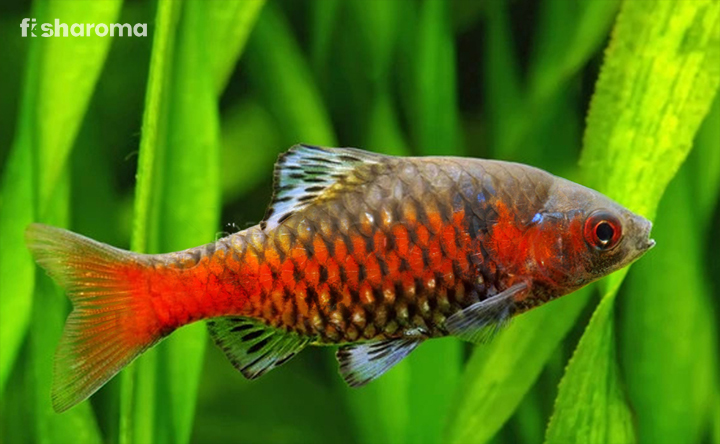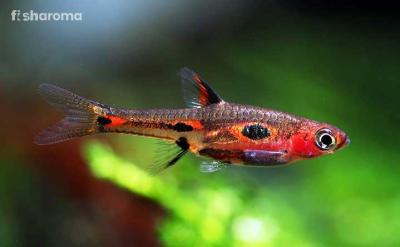Silver Arowana – The Complete Care Guide for the Little Fish
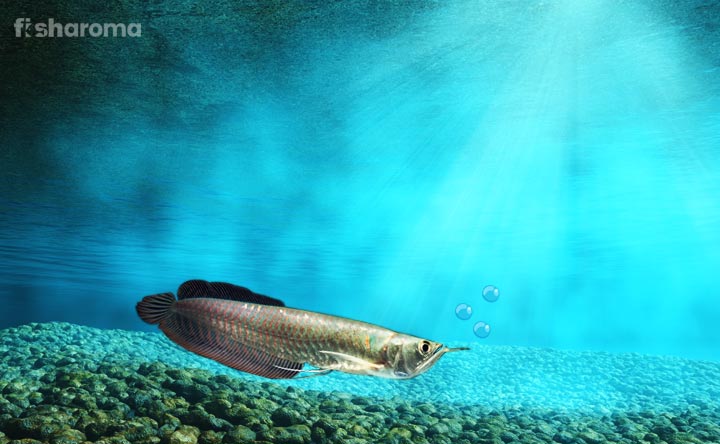
- Origin of Silver Arowana
- Silver Arowana’s Appearance
- Tank Requirements for Silver Arowana
- Water Type for Silver Arowana
- Silver Arowana’s Temperament
- Compatible Tankmates for Silver Arowana
- Feeding Requirements of Silver Arowana
- Silver Arowana’s Breeding Process
- Diseases of Silver Arowana with Preventive Measures
- Types of Arowanas
Fish enthusiasts sometimes like keeping silver and vibrant colored fish in their aquarium because those fish bring a silvery-glow to a fish tank. If you are one of the enthusiasts, you can keep Silver Arowana with your other slimy buddies in an aquarium. This South American freshwater fish is well-known for its large size, activeness, and hunting ability. So, for beginners, Arowana is not recommended, as it’s the most aggressive fish compared to other aquarium species. Not only in the residential aquarium, you will find this species in the fish tanks of the zoo, commercial places, and museums also.
Quick Details of Silver Arowana
From this below-mentioned short details, you can acquire some quick information about Silver Arowana before collecting it for your aquarium.
| Scientific Name | Osteoglossum Bicirrhosum |
| Origin | South America (Amazon River Basin) |
| Life-Span | 10-15 Years |
| Color | Silver, Shiny Green, Bright Red, Light Pink |
| Temperament | Aggressive |
| Size | 24-26″(60-66 cm) |
| Diet | Carnivore |
| Family | Osteoglossidae |
| Compatibility | Moderate with Some Species |
| Tank Size | Minimum 250 Gallons |
| Care Level | Difficult |
Overview
People also know Silver Arowana by other names like Monkey Fish, Dragon Fish, Arahuana, and Arowana. If you are attracted to the appealing color and shining gleams of this water-dwelling creature then learn about the care and breeding guide before you keep this aggressive fish in your aquarium. This powerful swimmer is a predator species, and as per the expert aquarists, it has remarkable eyesight with a sharp vision because it can see its prey from a long distance like insects in rivers, and birds in trees; so, it’s also known as ‘Water Monkey’.
These fish are hardy and can survive in an oxygen-deficient water tank also; therefore, they have less life risk, and they live about 10-15 years. The unique hunting style of Arowana is often noticed by the wildlife enthusiast. Moreover, these fish have a tremendous capacity to live without water for some time-periods because they use their swim bladders. However, if you are an expert fish-keeper then you can easily take care and include this precarious-natured fish in your pet fish family by purchasing them at $40.
Origin of Silver Arowana
This freshwater fish is found in the Amazon, Oyapock and Essequibo basin of South American tropical streams. They are both black and white-water habitats, sometimes found in flooded water body or rainforest. During 1912, because of the silver and light shining colors of this fish, it was named Silver Arowana. It’s scientific name ‘Osteoglossum’ is a Greek term for the genus that means bone-tongued, so it is also called Two-Barbels Bony-Tongued Fish.
Silver Arowana Appearance
The shining silver color of Arowana looks like silver jewelry floating in the water surface, which appeals the fish aquarists. These breeds are large in size and can grow up to 4 feet when fully matured. You will also find sharp teeth and dangerous jawline to hunt its prey easily and its mouth is vertical in shape. The pearl pink silver scales and bluish tint on the scales are admirable. Its length and breadth are quite huge compared to other aquarium fish, so you will probably need a large and separate tank for this species.
The male fish have large anal fin and they are slender in shape and you will find the dorsal fin of this fish almost fused with the caudal fin, which is very long with narrow-width. Moreover, during the first year of their birth, they grow into 2”. Also, its tape-like body is flattened from the sides covered with pale tints and scales with yellow-orange stripes.
Tank Requirements for Silver Arowana
As mentioned above, because of the huge size of adult Silver Arowana, you need a 250 gallons capacity fish tank and for the young species, a minimum 60 gallons large aquarium is needed. If your silver-shaded friend is not kept in a large tank then its body deformation will reduce its lifespan. So, keep in mind the following tank requirements to make a safe home for Silver Arowana.
Tank Size
For this 24-26” (60-66 cm) large fish breed, bring a 250-gallon aquarium because this fish is not only a huge breed but also a high jumper. Never overcrowd the tank of Silver Arowana with too much water species because this fish is aggressive and also need much space to dwell. Cover the top lid of the aquarium, so that they cannot jump out from the aquarium.
Ornaments
While doing the tank set up, keep fine gravels or sands at the bottom of the aquarium. Keep sturdy plants in the tank to make the aquarium eco-friendly. Also, avoid keeping weak-rooted vegetations which may get dislodged because of this huge-sized fish.
Lighting
Silver Arowana is a peace-loving fish that does not like a crowdy tank and harsh light. So, fix subdued lighting on the ceiling of the tank to maintain the submissiveness in the aquarium.
Filter
You need to bring a strong filter which can create strong water flow in the aquarium because huge fish breed like Silver Arowana prefers living in high-flowing water.
Water Type for Silver Arowana
If you are keeping water in the fish tank of Silver Arowana then maintain the temperature, hardness, and other conditions to make your pet fish comfortable in the tank.
Temperature
While keeping water in the fish tank, first check at the temperature and aim to keep 75-82°F (23-27 °C) water for the Arowana fish.
pH Level
The pH level of the water should be 6.5-7.5.
Hardness
The hardness of the water should be 1-8 dKH.
Cleaning Process
Keeping a pet fish in your aquarium is not the only responsibility of a fishkeeper, the hobbyists also need to manage the safety and hygiene of the fish home. So, it’s not required to put much effort, just bring a mild liquid soap and scrub out the algae, dirt and fish poops from the tank. After scrubbing, wash it out with aerated water, and wipe out the water droplets from the tank after a wash.
Replacement Method
Along with cleaning, you also have to check the quality of the water. Don’t keep the same water in the tank for a long time. Try to change at least 10% of the water once or twice a week, and for the monthly replacement process, change a minimum of 25% of the water in the aquarium. While putting the fresh batch of water, apply a water conditioner to kill the germs and parasites in the water.
Silver Arowana is not a weak fish breed, so it can adjust in any temperature of the water.
Silver Arowana Temperament
Arowanas are generally aggressive and also known as predator fish that eats other water species who lives with it. You can control the rage of the fish by switching off the lights in the fish tank sometimes.
Try to keep your silvery-companion by placing the tank in a low foot-traffic area because these species like to live alone without any disturbance. Keep the large aquarium in a big table, so that the aquarium does not fall down while shaking because of the infamous jumping nature of your silvery-shaded friend. Remember, this fish needs freedom and space because of its predating and wild nature, so try to give huge space to the fish, and if possible then keep it alone in a tank.
Compatible Tankmates for Silver Arowana
You need to be very cautious while choosing compatible companions for Silver Arowana because it is a predator fish and it’s habituated to fight with other species and eating small fish. Thus, don’t bring your other finned friends at risk by keeping them with the aggressive Arowana.
If you are planning to keep the same fish then you can keep only six of them together. Moreover, try to select larger and less aggressive fish to keep with Silver Arowana such as:
- Oscars
- Parrot Cichlid
- Large Plecostomus
- Catfish
- Angelfish
- Knifefish
- Green Terrors
- Clown Loach
- Sailfin Pleco
Usually, Arowanas prefer to stay alone, so either keep them alone or keep them with 3-4 compatible fish who can easily get familiar with your silvery-companion. Don’t keep highly aggressive and small fish with Silver Arowana because it may either fight or the other small fish may be eaten by the silvery Silver Arowana.
Feeding Requirements of Silver Arowana
Generally, Silver Arowanas are carnivorous but sometimes they consume algae in the water, so they are occasionally omnivorous. When they live in the wild, they eat snails, frogs, insects, small fish, rabbits, and even snakes! However, while dwelling in a fish tank, they consume small fish, snail, shrimps, and crustaceans. Their hunting style is different, as they swim below the water line and eat their prey by scooping them up at the bottom of the water. So, never keep small fish with them. While keeping Arowana in a tank, make it feel naturally comfortable by including the following things in its diet:
- Earthworms
- Crab
- Krill
- Beef Heart Flakes
- Crustaceans
- Crickets
- Shrimp
- Insect
- Bird Feathers
You can buy the following frozen fish foods available in the market at a reasonable price such as:
- HIKARI Sinking Carnivore Pellets
- Hikari Massivore Delite
- Aqueon Monster Fish Medley
- Hikari Tropical Food Sticks
Avoid feeding them sinking foods because they prefer eating floating foods. The baby Arowanas are recommended to be fed thrice a day and adults should be fed four times every day, as they need a lot of food. Balanced nutrition and dietary routine will help them grow in good shape and height. Remember, a healthy and good diet are the prime sources which can help in nourishing your pet fish and managing its immune system.
Silver Arowana Breeding Process
The terrestrial Arowanas generally lay eggs during the rainy season at the wild flooded river stream. They also lay eggs during winters in the month of December-January in cold. Generally, they pair off and build a nest while spawning, and the female Arowana lays many eggs in the nest and protects them with the help of the mouth-brooding process of the male parent.
Compared to the other fish, the eggs of Silver Arowana is larger and the color is orange or red. The fish carry the eggs for 50 days and fertilize the eggs with its larvae. After five weeks of hatching and fertilization, baby Arowanas start finding their food and behave like adult predator fish coming out from the mouth of their father fish. Therefore, while you want to encourage their breeding process, you need a 500 gallons large-sized fish tank because Silver Arowana cannot spawn and give birth in a small tank with a limited place.
It is hard to differentiate between the male and female Silver Arowanas because they have similar looks, color, and brightness. However, if you see minutely then you will find the body structure of the female fish is more rounded and its anal fin is shorter than the male Arowana.
Difficulties in Breeding Silver Arowana
Beginners are recommended not to keep Silver Arowana in your fish tank because of its high temperament, large size, and complicated breeding process. Moreover, a fish-breeder may get confused with the fast maturity process of this predator fish, as it grows faster and swift compared to other water species. You also have to collect a large tank with a huge space requirement because of its fast growth, reproduction process, and jumping nature. So, take suggestions from the expert aquarist before you keep your silvery-scaled companion in your fish tank.
Diseases of Silver Arowana with Preventive Measures
Every fish breed has some common illnesses but the weak-point, infections and immunity power of all the water species are not the same. It is quite different from each other, so you need to learn about the preventions and interventions of different diseases of the fish breed that you are keeping in your aquarium.
Silver Arowana is a large and strong fish that can adjust living in several types of places but this fish is prone to some diseases such as:
- Bacterial Infections
- Ich
- Parasitic Infections
To keep the environment of the living place of your little friend safe, you need to work on tank management by changing the water every week, feeding the right amount of safe food to the fish, cleaning the decorative items in the aquarium, and removing decaying substances from the water.
Moreover, when you see an alarming condition in your little friend, just get information from veterinary doctors for the treatment and prevention of such precarious diseases. Taking action in a correct time will really save your tiny companion from hazards caused by infections.
Types of Arowanas
Silver Arowana and other species in Arowana group originated in several regions like Australia, South America, Asia, Africa, and many other places. Let’s discuss a few similar looking breeds with different shades that fall in the fish family of Arowana.
- Asian Red Arowana – This carnivorous fish looks like the Silver Arowana but the bright-red color of this Asian fish appeals to the fish-keepers and that is the reason they like keeping Asian Red Arowana in their aquarium. Moreover, the length of this fish is larger compared to other Arowanas and they are active swimmers like Silver Arowana.
- Black Arowana – The long-trapped tail and excessive elongated body of Black Arowana makes it completely different from other fish. Moreover, the tail of this species grows up to 90 cm, 35”. The dark steel grey color with blue stripes in the body of this drown-bridge feeder appeals to its style to the aquarist.
- Red Dragon Arowana – Seven rows of large scales in the red-colored body with pinkish spots makes this aquarium fish quite adorable and beautiful. They also grow up to 35” and move fast in the water.
- Super Red Arowana – Super Red Arowana is a very hardy and adjustable species like Silver Arowana. It grows up to 40” and the super vibrant color of these fish is really mesmerizing. You can brighten the ambiance of your aquarium by keeping this fish in your fish tank.
- Golden Arowana – The pectoral-shaped fins and golden brightness of Golden Arowana can bring the same beauty in your fish tank which can be seen with the silvery brightness of Silver Arowana.
- Malaysian Red Arowana – This Malaysian species has an aesthetic look and it’s a smart swimmer like Silver Arowana. Moreover, the hunting style of this carnivorous fish is quite different than other fish.
- Flowerhorn Arowana – This species is from Cichlid family and is well-known because of its familiarity. Its nose just looks like a flower, so they are named Flowerhorn Arowana, and they are one of the best companions of Silver Arowana.
- Cross-Back Arowana – The glittering and reflective scales of Cross-Back Arowana is neat and distinctive in nature. These fish become more colorful with their growing age and have the highest growth capacity.
- Green & Blue Arowana – Green & Blue Arowana has grey and green scales in its body with a blue background. The elongated dark stripped greyish green tails quite larger than other fish. However, it is a very slow swimmer in the Arowana family.
- Jardini Arowana – The other name of this fish is Gulf Saratoga Barramundi and this species grows faster than Silver Arowana and is playful in the water. Fish-keepers always like its jovial and active nature.
- Golden Cross-Back Arowana – The cross scales in the body of this golden shaded fish makes it looks different to others and it also grows up to 35”.
Care Guide for Silver Arowana
This predator fish is sturdy and independent in nature, still, you need to take care of its health, breeding, housing, diet, and other necessary things. To avoid bloodshed and fighting of Arowana with other fish, you should either keep this fish alone or keep Silver Arowana with 2-3 compatible partners. Avoid keeping much male fish in the same fish tank which can lead to fights and stress. Moreover, the tensions can result in health issues of your silver-finned friend.
Taking proper care of the small things of your pet fish as a child will help increase its longevity and blissful happy life. So, always get proper knowledge about the fish breeds that you are keeping in your aquarium.
Interesting Facts about Silver Arowana
- Apart from using its teeth, the bony tongue of Arowana also helps it to hunt and digest its food easily by cutting or chewing the eatables.
- It can fly and jump about 5 feet above the water to catch its prey.
- Silver Arowana is a diurnal animal and is active only during day time.
- These fish only recognize their owner and eat foods from their hand after training.
- It is the longest living fish that can survive about twenty years in wild and 10-20 years in captivity.
Look at Other Aggressive and Semi-Aggressive Fish like Silver Arowana
Similar to Silver Arowana, you may also get knowledge about other aggressive and semi-aggressive natured fish that are kept in aquariums:
- Convict Cichlid : This American fish is territorial and aggressive in nature, but if you know how to train and take care of this freshwater species then you will not face any problem to keep this silver-colored fish.
- Crowntail Betta: Native to the rivers of America, these red and blue-shaded fish are not very friendly to human because of their wild and aggressive nature. Proper training can definitely support them to be your best companion at a time.
- Rainbow Shark: This fish is semi-aggressive but its lovely and bright colors are often loved by the fish-keepers.



